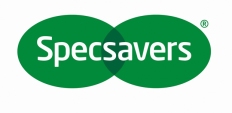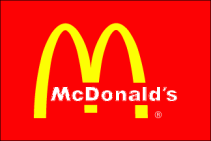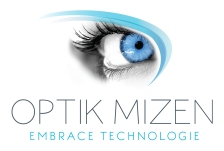
As a young kid back in the late 70’s (yes, you’re completely correct, I don’t look NEARLY old enough!), I can vividly remember walking with my dad down to the paper-shop and stopping to gaze longingly at the “talking” Doctor Who Daleks in the toy shop window.
The average high street in those days was filled with small independent shops and businesses, and hardly a multiple in sight. Shopping was arguably a more rich and varied experience – and certainly a more personal one.
For example, when I take my son to Toys R Us I have to question if there’s the same sense of anticipation, the same personal engagement as I had exploring the nooks and crannies of old Roy Bain’s toy shop 35 years ago? Maybe it doesn’t matter… After all, my son doesn’t know any different to the massed, inexhaustible ranks of billion-dollar movie spin-offs. There’s no concern over whether a toy will “still be there by the time it’s my birthday” or the magical prospect of something seemingly unique, left alone high on dusty shelf that the other kids passed over or didn’t know existed.
Maybe we’re always nostalgic for what we remember from the past, particularly from childhood. Yet I would still argue that todays mass consumerism, fed through retail parks and on-line shopping, largely represents a dumbing down of the whole retail experience.
 And it can apply to optics just as much as it can to toys. In fact, it’s probably worth comparing Specsavers or Boots to Toys R Us…or indeed to Sports Direct or McDonald’s. Whilst each will have its own approach based on its industry and, of course, the ideas of its management team, there will likely be some common themes.
And it can apply to optics just as much as it can to toys. In fact, it’s probably worth comparing Specsavers or Boots to Toys R Us…or indeed to Sports Direct or McDonald’s. Whilst each will have its own approach based on its industry and, of course, the ideas of its management team, there will likely be some common themes.
- Each of the brands mentioned has many outlets, all located in prime retail space. These units,
 usually large, are always expensive.
usually large, are always expensive. - Each requires a huge advertising budget to drive the necessary volume of customers to its outlets.
- Each has an expensive central infrastructure to support.
- As a consequence of points 1, 2 and 3, each has a business model that completely relies on processing as much volume as possible.
- And as a consequence of point 4, each has to simplify and standardise its offer across all its outlets in order to work within a tight framework and maximise its profits. Deviation from this rigid ‘modus operandi’ increases its costs exponentially.
So, based on these facts, we can see that large multiples MUST ensure that customers are dealt with quickly with minimal complications. They need to see as many people as possible to stay ‘on target’ and cannot deviate from their “magic formula” of selling a restricted menu within fixed guidelines.
Of course, dealing in such large volume allows them to sell cheaper (I’m sure that if my local toy shop from the late 70s was still around it wouldn’t be able to compete with Toys R Us) but it also means they have limitations.
One of these limitations is FLEXIBILITY. In the case of optics and specifically lenses, for example, an ECP in a multiple cannot step outside of his/her permitted “offer” and thus is unable to present the industry’s full range of lens options to a patient. So the patient gets a limited selection consisting of only the technologies that the multiple deems conducive to its profit margin.
 Another crucial limitation is TIME. The time allocated to a patient in a multiple is pressured as the practice has to process so many eye tests and dispenses. In this context, spending extra time with a patient can be an indulgence that is frowned upon.
Another crucial limitation is TIME. The time allocated to a patient in a multiple is pressured as the practice has to process so many eye tests and dispenses. In this context, spending extra time with a patient can be an indulgence that is frowned upon.
TRAINING is another problem. Maintaining high standards across dozens (or hundreds) of outlets is incredibly difficult and ultimately standards will vary considerably. This can be extended to people skills and even basic courtesy.
For the independent practice owner the picture is very different. He or she can take as much time as is needed to fully understand and evaluate their patients’ needs. He/she can incorporate any number of products into the practice’s offer, and can fully explain the advantages of the different technologies and lens treatments. He/she can easily ensure that practice staff are polite and friendly at all times and have a comprehensive understanding of the products that the practice offers.
Price is only one aspect of retail optics. And those patients who value it most will always end up in the cheapest multiple outlet in their town. However, many patients – especially when it comes to something as important as their eyes – appreciate another factor: VALUE. And when it comes to value its the independent practice that holds the strongest hand.
JAMIE HOLORAN (CEO, Optik Mizen)

